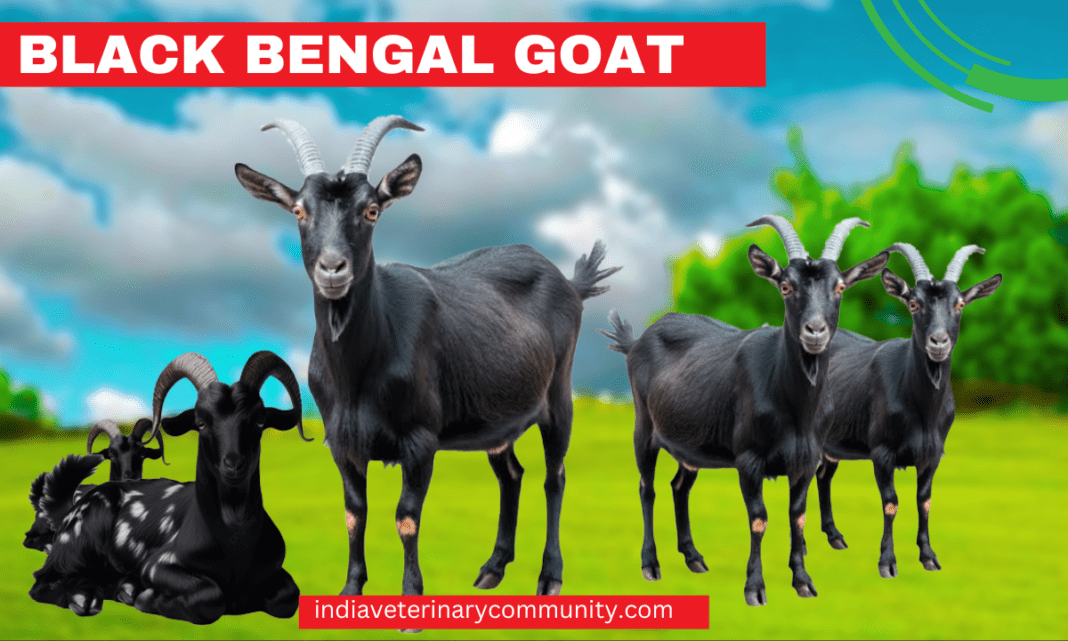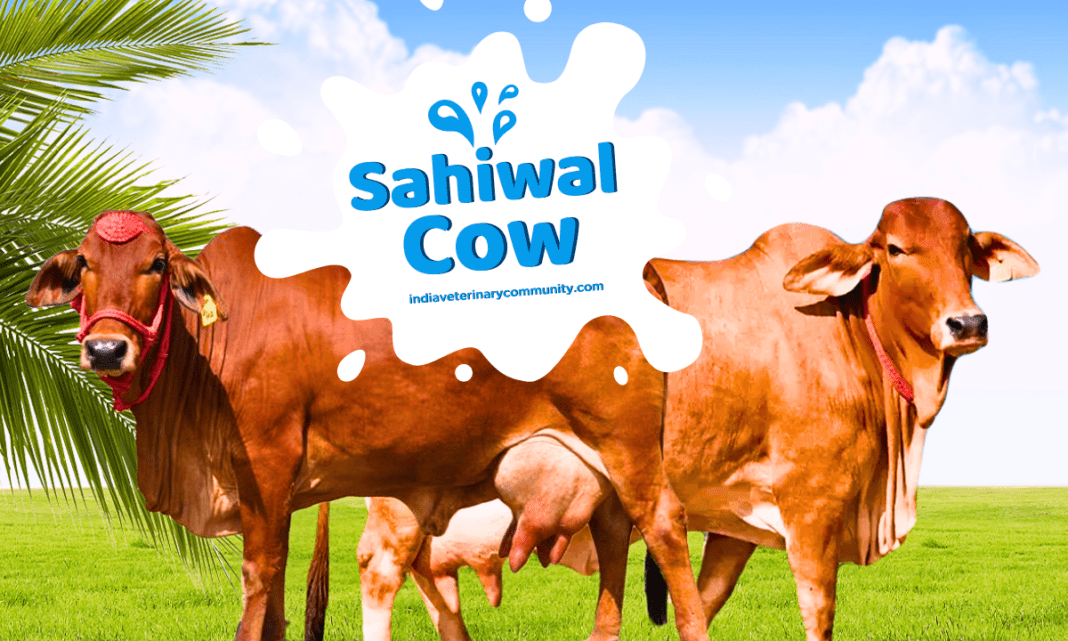Black Bengal goat farming is becoming more and more popular in India. This hardy and adaptable breed is known for its quality meat, and farming them can be a profitable venture for both beginners and experienced farmers. In this blog article, we will take a deep look at what makes these goats special, how to take care of them, and why investing in Black Bengal goat farming could be a great decision.
Why Black Bengal Goats Are Important for Indian Farmers
One of the biggest reasons Black Bengal goats are loved by Indian farmers is their ability to adapt to different environments. Whether it’s a hot summer or a cool winter, these goats can survive with minimal care. They grow fast, produce tender meat, and are relatively low-maintenance compared to other livestock. For farmers in rural areas, raising these goats can offer a steady income without needing a lot of land or resources.
Key Characteristics of Black Bengal Goats
- Size and Appearance: These goats are small and compact. Most of them are black, although some may have white markings. The males have slightly curved horns, while the females usually have smaller or no horns.
- Adaptability: One of the standout features of Black Bengal goats is their ability to thrive in a variety of climates. They are known for being hardy animals, making them ideal for Indian farmers.
- Calm Temperament: These goats are generally calm and easy to manage, which is another reason farmers prefer them.
Breeding and Reproduction
To get the most out of Black Bengal goats, it is important to understand their breeding cycles. Female goats, also known as does, typically reach sexual maturity between 7 to 12 months. The best time to breed these goats is during the cooler months, from September to February. After a gestation period of about five months, the doe usually gives birth to twins or triplets.
Care For Newborn Goats
When the kids (baby goats) are born, they need extra care. Farmers should ensure they are kept warm and dry. It’s also crucial that the newborns receive colostrum, a special type of milk, within the first few hours to boost their immunity. Cleanliness is essential to prevent diseases, and regular health check-ups are a must during their early life.
Housing and Diet
Housing Requirements
Proper housing is important for the health and productivity of Black Bengal goats. Farmers should build simple sheds that are well-ventilated and protect the goats from extreme weather conditions. The housing area should have good drainage to prevent the buildup of moisture, which can lead to health issues like foot rot.
Nutrition and Feeding
Black Bengal goats thrive on a diet rich in roughage, such as grass, leaves, and grains. They should also have access to fresh water at all times. Adding mineral supplements and vitamins can boost their overall health and increase their meat quality. Farmers can also feed them concentrated feed for better growth.
Jamunapari Goat Guid For Indian Farmers In 2024
Sirohi Goat Farming: Tips for Success and Sustainable Practices
Managing Goat Health
Goats’ health is crucial for a successful farming venture. Regular vaccinations and deworming are essential to keep them free from diseases.
Common Diseases in Black Bengal Goats
Proper health management is critical for keeping Black Bengal goats healthy and productive. Here are the most common diseases that affect these goats and how to prevent them:
1. Pneumonia
- Symptoms: Difficulty breathing, coughing, nasal discharge, and fever.
- Causes: Cold weather, poor ventilation, and damp housing.
- Prevention: Keep goats in warm, dry, and well-ventilated shelters. Ensure their bedding is clean and avoid exposure to cold or wet conditions.
2. Foot Rot
- Symptoms: Lameness, bad odor from hooves, and inflammation between the toes.
- Causes: Wet or muddy environments allow bacteria to infect soft hooves.
- Prevention: Keep the shelter dry and clean, trim hooves regularly, and treat with antiseptics if needed.
3. Internal Parasites (Worms)
- Symptoms: Weight loss, diarrhea, weakness, and pale gums in severe cases.
- Causes: Contaminated grazing areas or irregular deworming.
- Prevention: Deworm goats regularly and ensure grazing areas are clean and safe.
4. External Parasites (Lice and Ticks)
- Symptoms: Scratching, hair loss, and visible lice or ticks.
- Causes: Poor hygiene or contact with infected animals.
- Prevention: Inspect goats regularly, keep housing clean, and use medicated sprays or baths to control infestations.
5. Enterotoxemia (Overeating Disease)
- Symptoms: Sudden death, lethargy, diarrhea, and abdominal pain.
- Causes: Overconsumption of rich feeds or sudden changes in diet.
- Prevention: Vaccinate against enterotoxemia and provide a balanced diet with gradual changes in feed.
6. Mastitis
- Symptoms: Swollen udder, reduced milk production, and pain during milking.
- Causes: Bacterial infection due to poor milking hygiene.
- Prevention: Keep the udder clean during milking and treat injuries to prevent infection.
7. Scours (Diarrhea in Kids)
- Symptoms: Loose stools, dehydration, and weakness in kids.
- Causes: Poor diet or bacterial/viral infections.
- Prevention: Provide clean water, proper nutrition, and ensure hygiene in feeding practices.
8. PPR (Peste des Petits Ruminants)
- Symptoms: High fever, nasal discharge, sores in the mouth, diarrhea, and difficulty breathing.
- Causes: Viral infection spread through contact with infected animals.
- Prevention: Vaccinate goats annually and maintain good biosecurity practices.
9. Orf (Contagious Ecthyma)
- Symptoms: Sores or scabs around the mouth, lips, and udders.
- Causes: Viral infection spread through contaminated equipment or contact with infected goats.
- Prevention: Isolate infected animals and disinfect all equipment.
10. Bloat
- Symptoms: Swollen abdomen, discomfort, and difficulty breathing.
- Causes: Overconsumption of lush green grass or grains.
- Prevention: Avoid sudden changes in diet and limit access to excessive amounts of green fodder.
Vaccination Schedule for Black Bengal Goats
Vaccination plays a key role in preventing common diseases in Black Bengal goats. Below is a suggested vaccination schedule:
1. PPR (Peste des Petits Ruminants)
- First Dose: 3-4 months of age.
- Booster: Annually.
- Importance: Protects against a highly contagious viral disease.
2. Enterotoxemia
- First Dose: 6-8 weeks of age.
- Booster: After 4 weeks, then annually.
- Importance: Prevents sudden death due to overeating disease.
3. Tetanus
- First Dose: 6-8 weeks (often combined with enterotoxemia as CDT vaccine).
- Booster: Annually or after injuries/surgeries.
- Importance: Protects from a fatal infection caused by wounds.
4. Foot and Mouth Disease (FMD)
- First Dose: 4-6 months.
- Booster: Every 6 months.
- Importance: Prevents blisters in the mouth and hooves, affecting productivity.
5. Rabies
- First Dose: 3-4 months in high-risk areas.
- Booster: Annually.
- Importance: Rabies is fatal and can spread to humans.
6. Sheep and Goat Pox
- First Dose: 3 months.
- Booster: Annually.
- Importance: Prevents skin lesions and fever caused by a viral infection.
7. Hemorrhagic Septicemia (HS)
- First Dose: 6 months.
- Booster: Annually before the rainy season.
- Importance: Protects against sudden death from bacterial infection.
8. Anthrax
- First Dose: 6 months.
- Booster: Annually, especially in anthrax-prone areas.
- Importance: Prevents a serious bacterial infection that affects both animals and humans.
9. Brucellosis (For Breeding Animals)
- First Dose: 4-6 months.
- Booster: Annually, especially for breeding females.
- Importance: Prevents abortions in pregnant goats and protects humans from infection.
10. Bluetongue (In Endemic Areas)
- First Dose: 3 months.
- Booster: Annually.
- Importance: Protects against viral disease spread by insects.
Economic Importance of Black Bengal Goats
Black Bengal goats gives multiple streams of income for farmers:
- Meat Production: The meat from these goats is highly valued for its tenderness and flavor. In India, the demand for goat meat is constantly rising, making this a profitable business.
- Skin for Leather: The skin of Black Bengal goats is also in demand in the leather industry.
- Milk: Although not primarily bred for milk, these goats can produce enough milk for home consumption or small-scale selling in local markets.
Black Bengal Goat Milk Production
While these goats are primarily raised for their meat, they do produce some milk.
Milk Yield
- Average Production: 0.5 to 1 liter per day.
- Lactation Period: 3 to 4 months after kidding.
- Usage: Mainly used for feeding their kids or household consumption.
Milk Quality
- Fat Content: 4-5% fat making creamy and suitable milk for traditional dairy products like butter and ghee.
- Nutritional Value: Rich in protein, calcium, and essential vitamins.
Improving Milk Yield
- Nutrition: Provide balanced feed, including fresh fodder, grains, and supplements.
- Health Management: Regular vaccinations, deworming, and maintaining good health will boost milk production.
- Clean Milking Practices: Use clean, gentle milking techniques to reduce stress and improve yield.
Benefits of Raising Black Bengal Goats
- Adaptability: These goats can thrive in almost any type of climate in India, from hot summers to cooler winters.
- Low Maintenance: They don’t need large amounts of feed or expensive care, making them ideal for small-scale farmers with limited resources.
- High Reproductive Rate: The goats reproduce quickly, often giving birth to twins or triplets, which increases the herd size and profit potential.
Comparison with Other Goat Breeds
When compared to other breeds like the Boer goat, Black Bengal goats are easier to manage because of their smaller size and ability to adapt to different climates. While larger breeds may be better for milk production, Black Bengal goats are favored for their meat quality and their ability to survive on less food.
The Future of Black Bengal Goat Farming
With the demand for high-quality goat meat growing, the future of Black Bengal goat farming looks very bright. More farmers are getting interested in raising these goats due to their economic potential. As more farmers adopt sustainable practices, the production efficiency of Black Bengal goat farming will improve even further.
Also, government support and initiatives are helping farmers get started in this sector, ensuring that the future of this farming practice remains promising.
Conclusion
Black Bengal goat farming is a fantastic opportunity for Indian farmers who are looking to improve their income without investing heavily in expensive infrastructure or large land areas. These goats are hardy, adaptable, and provide multiple products like meat, milk, and leather. Whether you are an experienced farmer or just starting, raising Black Bengal goats can offer both personal satisfaction and financial profit.




